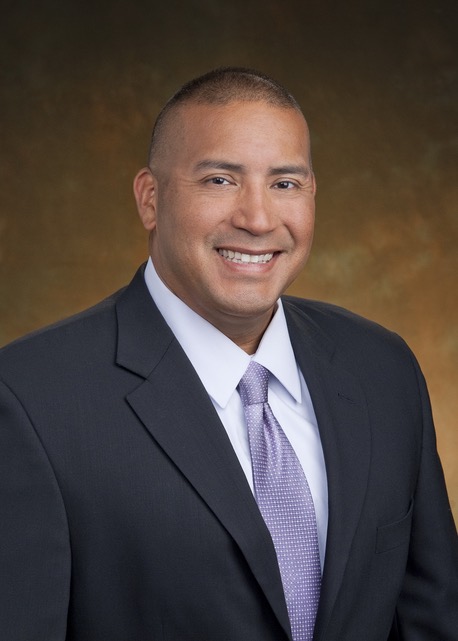Violence prevention is once again top of mind after two recent shootings in Atlanta and Boulder. We’re revisiting an EHS on Tap podcast where we spoke with a workplace violence prevention expert on how you can take a proactive stance within your organization. Read on for the transcript of our conversation with Hector Alvarez, a Certified Threat Manager and President of Alvarez Associates, LLC.
This transcript was originally published on February 12, 2020, as a companion to an EHS on Tap podcast episode released on that date. You can listen to the full audio of the episode on violence prevention here.
Justin Scace: Hello everyone, and welcome to EHS On Tap. I’m your host, Justin Scace, Senior Editor of the EHS Daily Advisor and Safety Decisions magazine. Workplace violence prevention should be a priority for every environment, health, and safety professional. Although you may feel certain it can never happen at your organization, planning for the possibility of a violent incident is essential for ensuring that your employees stay as safe as possible. On our latest podcast episode, we’re talking to a violence prevention expert who has the advice you need on everything from red flags to regulation. Plus, we’ll talk about his own prevention philosophy, called MOVE. Today we are joined by Hector R. Alvarez, the president of Alvarez Associates, LLC.
Hector is a Certified Threat Manager specializing in workplace violence prevention and he holds a Bachelor of Science in Criminal Justice and a Master of Science in Psychology. With prior experience ranging from city police officer to a security director responsible for protecting one of our nation’s most sensitive critical infrastructures, Hector has personally assessed and/or responded to thousands of potentially violent situations, developed numerous violence prevention programs, and trained tens of thousands of employees and managers in the areas of crisis intervention, active shooter response, violence prevention, domestic terrorism, and emergency management.
Hector will also be an expert speaker at the EHS Daily Advisor’s upcoming Safety Summit 2020 taking place April 6th through 8th in Indianapolis. So thank you very much, Hector, for being with us today on EHS On Tap!
Hector Alvarez: Thank you. I’m actually really honored to be with you.
Justin Scace: We’re glad to have you. So, to start off, could you tell us a little bit about your background? What led you to pursue a career in workplace violence prevention? And what’s the biggest lesson that you’ve learned from your experiences that can help our audience keep their employees safe?
Hector Alvarez: No, sure. Absolutely. What’s really interesting is how I stumbled into the discipline of wanting to prevent violence. And it was really out of a sense of frustration, because as I did more and more work for clients, my company is, we had access to all the gates, guards, and guns you could possibly imagine because they have almost endless budgets, but violent incidents kept occurring. And I started to realize that it was a very personal human-to-human interaction and it wasn’t the controls that were failing so much as our ability to adhere to the controls. And I just developed passion for wanting to help people keep from getting hurt. I mean, as simple as that sounds, that was really the foundation of what started me down this path.
Justin Scace: That’s great. So what do you think is the biggest lesson that you’ve learned over your vast experience of preventing violence?
Hector Alvarez: Yeah, it’s probably, I go back and forth on trying to figure out what’s the biggest lesson I’ve learned, and it’s a close tie between situations never ending up the way they appear in the beginning. I’ve started to review a lot of cases, incidents that appeared very scary and dramatic, intense in the very beginning, and then they turn out to not be so, and then the opposite is also true. Very often something that’s presented to us as, “This is not a big deal. You probably shouldn’t worry.” And they ended up being a very significant issue. It’s constantly true, that it’s just nothing ever appears the way it turns out, the way it initially appeared.
The second closest that I’ve learned is that somebody always knew, and if you could see me, I’m doing air quotes now, I’ve assessed and have been involved in thousands of cases and it’s really disturbing and telling how often we knew that something was wrong and didn’t take action. And so, knowing that there were warning signs ahead of time that were overlooked is probably one of my biggest takeaways, and of course frustration.
Justin Scace: Yeah, absolutely. That sort of leads me into my next question for you. One of the biggest misconceptions or mistakes among employers regarding violence is the old “it-could-never-happen-here” attitude. So besides that, what are some other common misconceptions or mistakes surrounding workplace violence and how can organizations overcome them?
Hector Alvarez: I think it’s inherent in the question that we’ve got this denial that we see in a lot of organizations, and I think the denial itself is rooted in not understanding the full scope of workplace violence. When you look at it, you realize that it’s everything from somebody wanting to take something to how we interact with our customers, to how we interact with each other. And then even personal relationships. I continue to be surprised. When we conduct classes on workplace violence and touch on domestic violence, how foreign and awkward it is to a lot of people. So probably the biggest misconception, I think, is how narrow some people define workplace violence. And when you take a step back and you realize any violence that occurs at work is workplace violence. It really broadens that. But if you keep the fairly narrow definition, I think it allows you the comfort of not having to focus on it, but your employees are still left to deal with it.
Justin Scace: Absolutely. So if I could pivot just a little bit and get a little bit on the regulation front. So California has a workplace violence standard on the books for healthcare facilities with another proposed standard for general industry working its way through the state lawmaking process. Do you think there will ever be a federal workplace safety standard put into place specifically addressing workplace violence?
Hector Alvarez: Well, I don’t think it’s letting the cat out the bag at all to say that I sat in the standards development meetings for the healthcare and have also sat in on the standards development meetings for the general industry. And observing federal regulators monitoring the progress that California is making … if I was just a betting person, I would say that yes, I believe that at some point we’re going to have a federal standard and I think we have to. I think once you removed the mystique away from workplace violence and you look at it, some of the cases that I deal with are so crystal clear.
It would literally be like, if somebody had come to your organization and dug a six-foot deep, six-foot wide hole in front of your office and then left and nobody said anything about the hole in front of the office and they walked by it and they didn’t put guard rails, they didn’t tell their employees how to address it, they didn’t try and fill the hole back up. A lot of times the incidents of potential violence are, in my opinion, that crystal clear and we’re walking right by it. And if it’s going to require an administrative incentive to address it, that may be, and it’s likely the path that we’re headed.
Justin Scace: Do you think that it would be relatively sooner rather than later? Or are we still looking for—I mean, the rulemaking process in general I guess takes a long time—but do you think it’s a few years down the road? A few decades?
Hector Alvarez: So—and I hate this answer—it depends. So, in California, the healthcare standard was on the books and then we had a significant, a couple of significant violent incidents in healthcare settings, and a state legislator said, “That’s enough.” And drafted some legislature that put just an arbitrary deadline, you have to have it in a year. So, the morbid side of me says, at some point in the very near future there’s going to be an incident that is significant enough or relevant enough that catches a legislator’s attention and you’re going to see this pace of legislation rapidly accelerate.
And that’s a prediction that I can’t place any foundation on, if it were to take its natural course in California, I think we’re 18 to 24 months out, a year-and-a-half to two years out. Nationwide, maybe it’s three years. But every day when I watch the news and I see tragic incidents occur and we all witness it and we realize as we look at these, that there probably was some indicators beforehand. Justin, I could see this being escalated much, much sooner than later.
Justin Scace: Okay. Now, while the agency, the federal agency, doesn’t currently have a standard, federal OSHA does define four categories or types of workplace violence. Could you tell us a little bit about each of these and perhaps which industries may especially be affected by each of them?
Hector Alvarez: Absolutely. And these four categories were based on research. And I think of areas of our discussion and effort that are probably the most useful, these four categories probably are. Because what they do is allow an organization or individual to break down the potential exposure very succinctly, very tight. And the four categories are fairly straightforward.
The first is just violence that’s born out of some type of criminal behavior. So, if you think of a traditional, a late-night convenience store or a taxi driver driving by themselves and there’s something to take (cash, drugs) and the individual’s by themself, first category. Category two involves the type of interaction that we have with customers. And so, very stereotypically you’d be thinking of a nurse-patient, a librarian and a library patron. It’s the nature of the ongoing interaction with the customer. The third type really involves who we work with, some call it lateral violence. It’s coworker on coworker violence. And it can involve somebody you work with now or somebody you worked with in the past. And a fourth category deals with interpersonal violence or domestic violence. That may spill over to the workplace.
And what gets confusing for some people is sometimes we think of interpersonal violence as just our personal relationships outside work. But, unfortunately, or fortunately, people are people and sometimes people date each other at work and relationships get complicated, any domestic issue that could spill over, that’s this category. For myself, personally, the one that is the most concerning is type four, the interpersonal violence. It’s one of the leading causes of death for women in the workplace. But the thing that really concerns me the most is that because it’s so personal and intimate that a lot of people don’t like talking about it. When I teach a class and I go through the four categories, everybody’s paying attention, interactive. And as soon as I mentioned the phrase “domestic violence,” the entire tone and tenor of the room changes. There’s a lot of stigmas around it. And so, my concern is because there’s stigmas around addressing it, it makes it much more likely that people will not come forward.
Now if you’re a, as an example, a pharmacy technician or a pharmacist who works at a retail area that stays open late at night, would type one be very concerning to me, or type two? Absolutely. So, it’s important that industries, that individuals have the ability to look across the spectrum of four categories of violence and assess, “What’s my biggest exposure?”
Justin Scace: So, speaking of what their biggest exposure is, could you tell us what are some of the biggest red flags for potential violence that all employers should be aware of?
Hector Alvarez: This is such a big question because I continue to evolve in my approach to addressing violence, and what I’ve started to realize is very often we understand and even recognize the red flags of potential violence, because they’re so crystal clear and I’ll boil it down to the simplest that I possibly can state it: The individual does not act like a regular customer. The individual does not act like a regular customer. And I’m doing big air quotes and I’m emphasizing “regular” to make sure that it’s not confused with me saying “normal.” It’s not normal. We’re all different. There’s no baseline.
However, as human beings who interact with other human beings, you start to realize that there’s different ways people interact when they’re upset. And then there are those who are different. They act outside the norm. So, to me, the biggest red flag for us as an individual is when you find yourself wondering, “Hey, that doesn’t seem right. Hey, that seems unusual. I wonder if I should say something.” So, the big bar for me, if you ever wonder, if you find yourself ever wondering if you should say something, you should say something. So that big red flag is an inconsistency with how that person has normally interacted with you.
Sounds overly simple. But that’s what we keep hearing. And when I talk to people post-incident, they always tell me that they knew something was different.
Justin Scace: So, folks should kind of trust their instincts in that sort of regard.
Hector Alvarez: Yeah, and I couldn’t make it any clearer professionally and personally; I have come full circle to believing that the greatest tool that we have for detecting potential violence is trusting our intuition, period. And, however, it requires some self-awareness. You do have to be aware of other contributing factors that can get confused with intuition. Sometimes our past experiences, a bias, just views in general of the world can be confused with intuition. But they’re not the same thing.
Intuition in its rawest form is the most accurate. I mean, just think about this. If you think about in your lifetime how many times you may have truly been concerned for your personal safety, I mean really scared, and you draw a line and you add in how many people in that same period of time you’ve interacted with (at the movies, at the mall, wherever). And what you’re going to find out, or what you’re going to realize [is] on top, you have a number that’s relatively small—once or twice I’ve really been nervous—over a number that is indescribably large, because what we are doing on a regular basis is screening out concerning behavior. Not a threat, not a threat, not a threat. This one’s different.
So, we do have to allow ourselves to realize that we are really good at understanding our situations because we’re human beings who’ve been around other human beings. And when something is abnormal, it stands out.
Justin Scace: So now I’d like to talk a little bit about your own approach to violence prevention. There are a lot of simple, easy to remember maxims when it comes to addressing violence. The most recognizable of which is “run, hide, fight.” Now, your advice for those dealing with an active shooter incident in particular is summed up in the acronym MOVE, M-O-V-E. So, could you tell us a little bit about each of these elements to your approach?
Hector Alvarez: Absolutely. When you look at responding, once we’ve missed everything or we didn’t have the opportunity to identify it and something terrible happens, [and] an act of violence is in progress, there are two big schools of thought. There’s what’s called a static approach—a plan, lock down, or do some action, draw a line. On the other side of the fence is what’s called an options-based response. I tend to strongly support an options-based response. So, the MOVE component for us is an acronym that basically says it’s this simple. As we’re sitting here listening to this podcast, if there were gunfire shots, screaming or yelling coming from in front of us, what direction would you want to go? And I hope you all pointed in your mind [and] say, “Well, the other way, you ding-dong.” I want it to be that simple, yeah, we have to move away.
Now the MOVE elements add an additional layer, which is one, I believe strongly that your ability to survive an incident starts before an incident occurs. The M stands for mindset. I want to go home, and I’m going to go home. The O stands for orientation. Before you can run or duck or hide, you have to quickly figure out where the violence is coming from. If it’s coming from the front, I want to go to the back. Just get your bearings very quickly. The V stands for volume. If for some reason, based on the scenario, I cannot run away, okay, I want to put as much time, distance, and material between me and the bad thing. I never want to suggest to anybody that you take a bunch of chairs to a gunfight. But if I do, I want you to take all the chairs. Take them all. And then lastly, the E, if he or she, if the gunman has found your location, you may have no other options than to fight back, the E is engage. With everything you’ve got. It’s fighting back.
And if you can remember nothing about the acronym, you just have to remember to move, move away from the violence, move to secure yourself, move to evacuate. I wanted it to be simple.
Justin Scace: Absolutely.
Hector Alvarez: Yeah. Justin, I had a conversation with my daughter today, she goes to school in Texas and at one of her sister colleges today there was an act of violence. And I can only assume that two young kids lost their life. And I got to tell you, man, it gets no more personal than seeing people close to you and have to worry about, are they going to make it back home? So, when I’ve thought about this approach, it’s got to be simple and it’s got to be practical.
Justin Scace: Yeah. It’s a crazy topic. It’s also a very grim topic, like what we’ve been talking about, and while it’s imperative to discuss it and conduct training, like we’ve been talking about, it’s still hard for a lot of people to discuss. So before we sign off, I want to ask you—without downplaying the issue at all, are there causes for optimism on the violence prevention front, any positive takeaways for our audience that maybe they can pass on to their workforce?
Hector Alvarez: I don’t think there could have been a more important question to ask, because while I think it’s powerful to understand the warning signs, while I think it can be powerful to understand the differences between people, I think the thing that’s going to get us through is, one, there are more good people than bad. Two, while I think it’s important to understand the differences between all of us, I put more faith and belief and optimism on working together on the things that we share in common. We all want to be treated with respect. We all want to be listened to. We all do not want to be told what to do. And I think the more that we focus on not just our diversities but the things that bind us together, we will spend much less time talking about how to survive an active shooter and much more time talking about just how to have a positive interaction and experience with each other at work.
Justin Scace: Absolutely.
Hector Alvarez: Yeah. I can’t remember who said it, but darkness will not drive out darkness, and as cheesy or as silly as it may sound, the more that we focus on the positivity and the supportive interaction with each other, the better off we’re all going to be.
Justin Scace: I think that was Martin Luther King that said that, wasn’t it?
Hector Alvarez: I think it may have been.
Justin Scace: Yeah, that’s great. I mean, that is some good positive takeaways there, and this has been a lot of very valuable information for our listeners. We’re looking forward to hearing more from you at Safety Summit 2020, Hector, and thank you again for taking the time to be with us today on EHS On Tap.
Hector Alvarez: I appreciate your time and I look forward to it as well.
Justin Scace: Now, if you’d like to hear more from Hector about workplace violence prevention, as well as learn a great deal more about all aspects of safety management, be sure to join us at the EHS Daily Advisor’s upcoming Safety Summit 2020, taking place April 6th through 8th in Indianapolis, Indiana. Hector will be speaking at the main conference as well as hosting a separate pre-conference workshop. So visit live.blr.com today to register or click on the links that appear on this podcast episode’s EHS Daily Advisor webpage.
And in the meantime, look out for new episodes of EHS On Tap and keep reading the EHS Daily Advisor to stay on top of your safety and environmental compliance obligations, get the latest in best practices, and keep your finger on the pulse of all things related to the EHS industry. Until next time, this is Justin Scace for EHS On Tap.
 Hector Alvarez, CTM, MS, the president of Alvarez Associates LLC, is a security expert who specializes in workplace violence prevention. He holds a BS in criminal justice and has more than 25 years of experience in mitigating security threats. He has worked as a security director protecting one of our nation’s most sensitive critical infrastructures, as a city police officer, and as a professional security consultant. He understands the challenges individuals and organizations face when addressing the threats of violence because he has responded to them. In addition, he has helped organizations recover from significant incidents of violence and has served as a responder to the Loma Prieta earthquake and the aftermath of Hurricane Katrina.Alvarez has personally assessed and/or responded to thousands of potentially violent situations, developed numerous violence prevention programs and trained tens of thousands of employees and managers in the areas of crisis intervention, active shooter response, violence prevention, domestic terrorism, and emergency management. Hector Alvarez, CTM, MS, the president of Alvarez Associates LLC, is a security expert who specializes in workplace violence prevention. He holds a BS in criminal justice and has more than 25 years of experience in mitigating security threats. He has worked as a security director protecting one of our nation’s most sensitive critical infrastructures, as a city police officer, and as a professional security consultant. He understands the challenges individuals and organizations face when addressing the threats of violence because he has responded to them. In addition, he has helped organizations recover from significant incidents of violence and has served as a responder to the Loma Prieta earthquake and the aftermath of Hurricane Katrina.Alvarez has personally assessed and/or responded to thousands of potentially violent situations, developed numerous violence prevention programs and trained tens of thousands of employees and managers in the areas of crisis intervention, active shooter response, violence prevention, domestic terrorism, and emergency management.
He is frequently called upon as a commentator and public speaker, and he has made numerous media appearances. He has been featured on ABC10, KCRA3, CBS13, FOX40, Univision, KFBK, Sacramento Bee, Folsom Telegraph, Sacramento Business Journal, and the Society for Human Resource Management. His clients include a broad range of industries from the public and private sector. |




